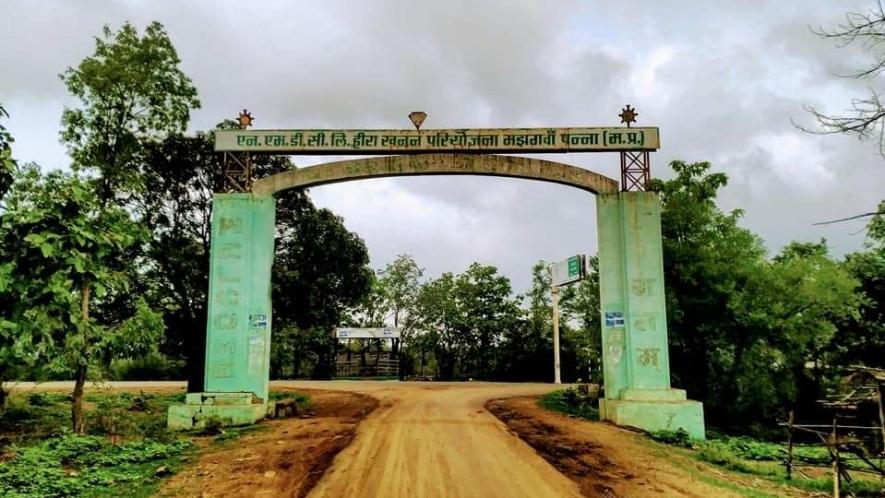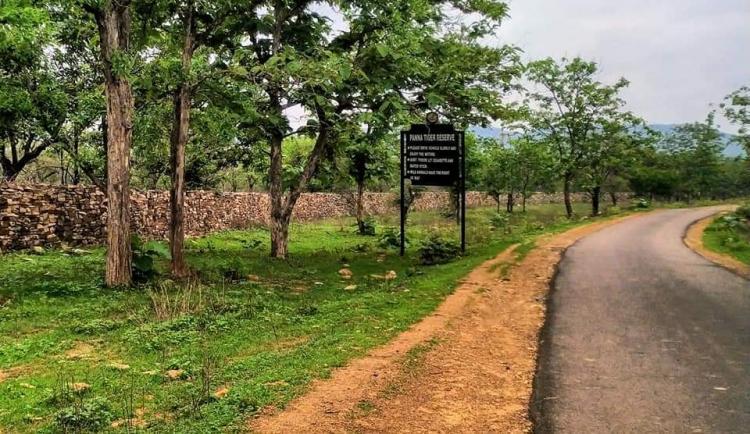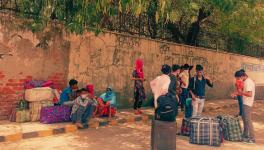No Development, No Employment: Panna Tiger Reserve Is a Curse, Residents Claim

Panna: The release of the All India Tiger Estimation Report 2018 has brought happiness to the government of Madhya Pradesh and tiger conservationists for regaining the ‘Tiger state’ tag with 526 big cats. However, the residents of Panna district have something else to say.
They believe that the national park has cast a shadow on Panna and it’s development. Poverty, migration, malnutrition and unemployment have accumulated since the park came into existence, they claimed.
“Panna was better before the national park,” said 55-year-old Mohammad Jamil, a cab driver. “Tribals and villagers were totally dependent on the forest. Labours used to earn from diamond mining, people had agricultural lands and water bodies. Since the district had ample land their was huge scope of investment, but all that has disappeared once the area was declared as a national park. It is important to save tigers but not at the cost of humans,” he added.
Panna forest was declared as a national park in 1993. It is the 22nd tiger reserve of India and the fifth in Madhya Pradesh. The national park extends over Panna and Chhatarpur districts.
The district is located in the Northeastern part of Madhya Pradesh, which falls under Sagar division, popular for diamond mining.
Also read: MP Tops in Tiger Conservation, But Lost 17,781 Acres Forest Land, Says FSI report
Social activist Yousuf Beg said, “Panna has nothing but poverty. Since the area falls under the forest zone no factory can be setup, more than 40 diamond mining areas have been shut, the reisdents can’t access the forests and a number of villages (adivasi majority) have been evacuated. As a result, migration, malnutrition, poverty has shot up in the district.”
“The park has given nothing to the residents, but taken everything. Since one of the gates of the park (Mandla Gate) is close to Khajuraho (known for temples), tourists access the park from Mandla gate, but never come to Panna. As a result the people of Panna are not even able to benefit from the tourists,” he added.
According to NITI Aayog Report, Panna is one of the most backward districts of the state. It has one of the highest cases of malnutrition, silicosis, and poverty index.
“It’s true, the park has cast a shadow on the residents. It ended the diamond mining business for which Panna was known. The region had the only industrial diamond mine in the country, but, after the area was declared a national park, more than 50 private diamond mining sites have been closed. This has resulted in unemployment and loss of revenue for the state and also promoted the illegal diamond mining,” said a senior officer of the Mineral Resources Department, Madhya Pradesh.

The National Mineral Development Corporation (NMDC) – the only diamond mining corporation in India – which was managing the mines in the region is also struggling to get the Forest Department’s nod for continuing its operations. The current mining site is also under threat, after a Supreme Court panel has asked to shut the mining activities by 2020. But the NMDC is seeking a 16-year extension till 2036.
“According to the geologists, the areas adjacent to the NMDC mining site has diamonds and were under the government’s management. But, since the area falls under the national park, the chances of getting permit is very thin,” said a NMDC official.
Unemployment, migration shoot up
According to the Wildlife Protection Act 1972 and National Tiger Conservation Authority, no factory or industry can be set up in the vicinity of forest. As a result, Panna has neither factories and nor any other source of employment.
After the closure of the diamond mines and restrictions on access to the forest resources, as unemployment rose, people started migrating. According to the 2011 census, Panna had 10 lakh population, but today the area has turned into a deserted place. Meanwhile, the district administration has no record of unemployment and migration.
Also read: Previous MP Government Conned Tribal Students for Data Collection
Even the Mahatma Gandhi National Rural Employment Guarantee Act (MGNREGA), which was introduced to provide employment for the marginalised section of the society and guaranteed 100 days of job, is entirely dysfunctional on the ground.
Zero Development
One of the most backward districts, Panna is home to around 60,000 labourers. Yet, the district has no train connectivity. A national highway which connects Satna and Chhattarpur districts passes through the region. Besides, there is a state highway which connects the district to Uttar Pradesh’s Banda district.
“Connectivity is the key to development but despite having a national park the city is very poorly connected with the nearby regions. People would have thought that the Park will bring prosperity to the district but it has turned into curse,” said Bhanu Gupta, a local journalist.
Abdul Jamel, a 52-year-old resident alleged that former MP and MLA from Panna, late Lokendra Singh was responsible for this condition of the district. “Lokendra Singh brought this tiger reserve project to Panna, and saved his more than 100 acres of land adjacent to the Mandla gate of the park,” he alleged.
Lokendra Singh had founded the Panna Tiger Reserve.
“He had been MLA and MP but he did not do anything for the city. As a result, it is the most backward district of the state,” Jamel asserted.
Panna has the highest cases of malnutrition in the state with 1,750 cases, according to the latest report of the NITI Aayog. Since the area has a number of stone mines, cases of silicosis have also been reported.
According to a city-based NGO, Prithvi Trust, which had organised a health check up camp for stone mining labourers in 2010, they found that 162 people including half dozen women were suffering from the diseases, but, after eight years, the government acknowledged only 41 patients.
Villages evacuated
Tribals, who were dependent on forests, and farm lands given by the previous governments, have been forced to vacate their homes. Willingly or unwillingly, dozens of villages have been evacuated and each families have been offered Rs 10 lakh as compensation and 5 acres of land. However, a number of the displaced people have not yet received even the meagre compensation amount or the promised lands.
“Those who agreed to move got Rs 7 to 8 lakh in their accounts, but, only few got land. The forest department charged Rs 2 to 3 lakh just for shifting our goods from one place to another,” said 65-year-old Bihari, an adivasi villager, who was evacuated from his village Budhrod of Madla Panchayat in 2009.
“We had farm lands, forests, animals, schools and water, but, since we have been evacuated we are just a daily wages labourers with no home. We should have been given land to live,” he added.
Also read: Tribal Resistance Gains Momentum Against Ganjal Moran Dam in MP
Just like Bihari’s village, people from several other villages like Talgaon, Malanpur, and Jhalar were evacuated and shifted to the city. However, they have not been able to find employment or housing in the city. In addition to that, major water bodies which were the source of farming have also been included in the park area. Since the villagers, who still have some farmlands, cannot access the water bodies, they are unable to continue farming.
Get the latest reports & analysis with people's perspective on Protests, movements & deep analytical videos, discussions of the current affairs in your Telegram app. Subscribe to NewsClick's Telegram channel & get Real-Time updates on stories, as they get published on our website.
























